Sprucing Up Your Patio with DIY Outdoor Decor
Are you tired of looking at a bland, uninspiring patio? Do you dream of transforming it into a cozy retreat where you can unwind after a long day or entertain friends on the weekends? If so, you're in the right place! This article explores **creative** and **budget-friendly** ideas to enhance your patio space through DIY outdoor decor projects. With a little imagination and effort, you can turn your outdoor area into a perfect haven for relaxation and entertainment.
Imagine stepping out onto your patio and being greeted by vibrant colors, inviting seating, and the soft glow of lights. Sounds appealing, right? The beauty of DIY projects is that they not only allow you to express your personal style but also give you the satisfaction of creating something with your own hands. So, grab your tools and let's dive into some exciting ideas that will breathe new life into your outdoor space!
Before you start your DIY journey, it’s crucial to select the right materials for your outdoor decor. Choosing materials that are both durable and aesthetically pleasing is essential for ensuring your efforts stand the test of time. Consider options like **wood**, **metal**, and **fabric**. Each material brings its own unique charm and functionality to your patio.
For instance, wood offers a warm and natural feel, perfect for creating rustic furniture. Metal can add a modern touch and is often more durable against the elements. Fabrics, particularly weather-resistant ones, can inject color and comfort into your seating areas. When selecting materials, think about how they will complement your existing decor and withstand outdoor conditions.
A comfortable seating area can transform your patio into a welcoming space. Think of it as the heart of your outdoor oasis where you can gather with family and friends. We’ll explore some DIY seating solutions that not only maximize comfort but also enhance the style of your patio.
Building your own benches and chairs allows for customization that store-bought furniture simply can’t match. You can create pieces that fit perfectly in your space and reflect your personal style. For instance, you might opt for a **simple bench** made from reclaimed wood, or perhaps some stylish chairs that pop with color. Here’s a quick overview of what you’ll need:
| Materials | Tools |
|---|---|
| Wood (Reclaimed or New) | Saw |
| Screws and Nails | Drill |
| Sandpaper | Screwdriver |
| Outdoor Paint or Stain | Paintbrush |
Follow these steps to create a simple bench:
- Measure the space where you want to place your bench.
- Cut your wood to size based on your measurements.
- Assemble the pieces using screws and nails.
- Sand the edges to avoid splinters.
- Paint or stain your bench to protect it from the elements.
Reclaimed wood adds character and sustainability to your projects. Not only does it have a unique history, but it also helps reduce waste. You can source reclaimed wood from old furniture, pallets, or even barn wood. Incorporating these materials into your DIY furniture designs gives your patio a rustic touch that is both charming and eco-friendly.
To enhance comfort and color, don’t forget about cushions and throws! Outdoor cushions should be made from weather-resistant fabrics to withstand rain and sun. You can even create your own DIY cushion covers using vibrant fabrics that match your patio theme. A few well-placed cushions can make your seating area feel like a cozy living room, inviting you to relax and enjoy the outdoors.
Proper lighting can set the mood for evening gatherings. Imagine soft string lights twinkling overhead or lanterns casting a warm glow around your seating area. DIY lighting ideas are plentiful and can be tailored to fit your style and budget. You could create your own lanterns using mason jars or string lights wrapped around trees or railings for a magical effect.
Integrating plants into your patio decor adds life and vibrancy. Plants not only beautify your space but also improve air quality, making your outdoor area feel fresh and inviting. Consider DIY planter projects that allow you to showcase your favorite plants while enhancing your patio’s aesthetic.
Vertical gardens are a fantastic way to maximize space and create stunning visual interest. If you're short on ground space, building a vertical garden using pallets or wall-mounted planters can add a lush backdrop to your patio. You can plant herbs, flowers, or even succulents, giving your outdoor area a burst of color and life.
Building your own planter boxes allows for customization and creativity. You can construct and decorate planter boxes that suit your patio's style while providing ample space for your favorite plants. Use different sizes and shapes to create an eye-catching arrangement. Plus, it’s a great way to showcase your gardening skills!
Q: What materials are best for outdoor furniture?
A: Durable materials like teak, eucalyptus, and weather-resistant metals are ideal for outdoor furniture. Reclaimed wood is also a great eco-friendly option.
Q: How can I make my patio more inviting?
A: Adding comfortable seating, colorful cushions, ambient lighting, and plenty of greenery can make your patio feel more inviting and cozy.
Q: What plants are best for outdoor planters?
A: Consider using herbs, flowers, or succulents that thrive in your climate. Always check for plants that are suitable for your area's sun and water conditions.
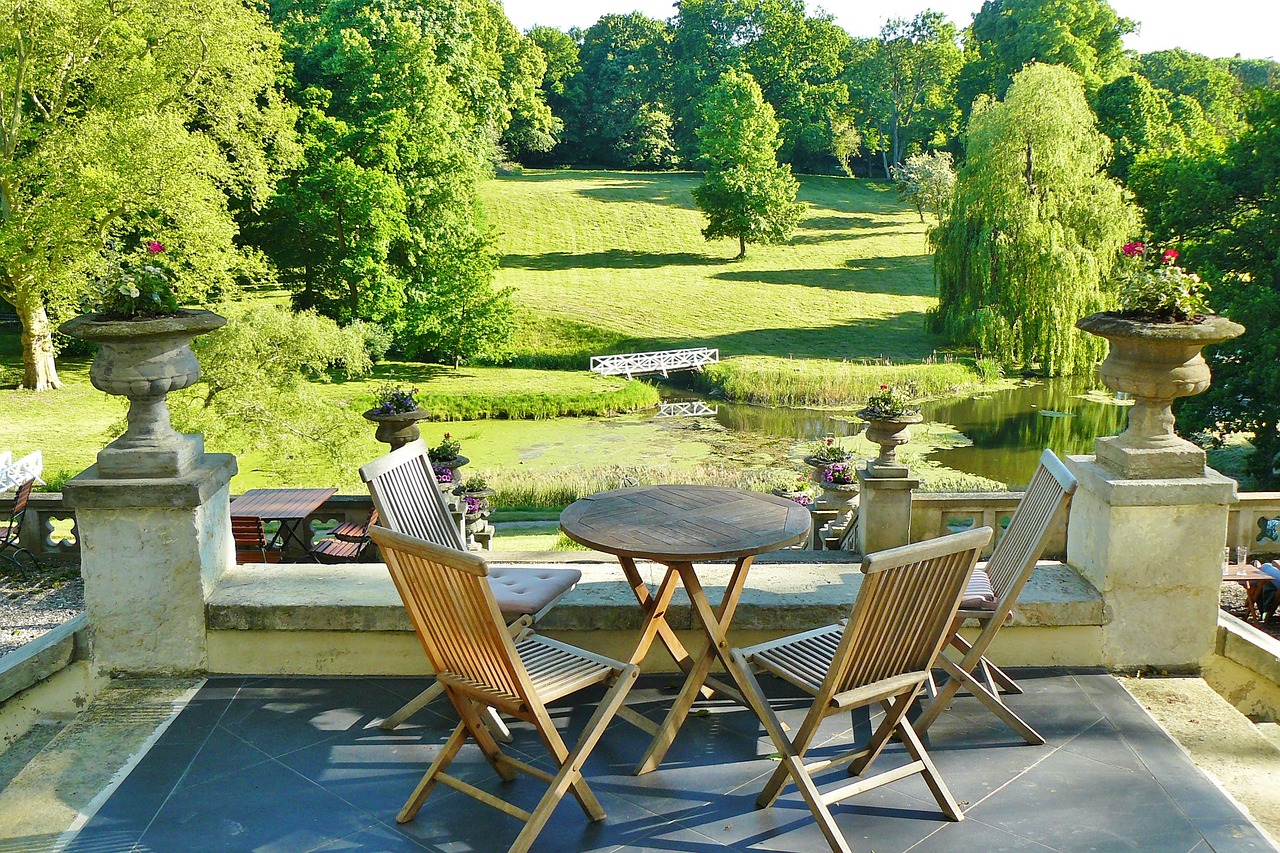
Choosing the Right Materials
When it comes to sprucing up your patio, is crucial for achieving both durability and aesthetic appeal. Think of it like picking the perfect ingredients for a delicious meal; the right choices can elevate your space from ordinary to extraordinary. Let's dive into some popular materials that can make your DIY outdoor decor projects not only beautiful but also long-lasting.
First up, wood. It’s a classic choice that brings warmth and a natural feel to your outdoor space. However, not all wood is created equal. For instance, cedar and redwood are naturally resistant to decay and insects, making them excellent options for outdoor furniture. On the other hand, pressure-treated lumber, while affordable, may require additional weatherproofing to ensure longevity. If you’re looking for a rustic vibe, consider using reclaimed wood. It not only adds character but also promotes sustainability, allowing you to create stunning pieces while being eco-friendly.
Next, let’s talk about metal. Metal furniture, like aluminum or wrought iron, offers a sleek and modern look. These materials are incredibly durable and can withstand the elements, making them a great choice for outdoor settings. However, keep in mind that some metals can get quite hot in direct sunlight, so pairing them with cushions can add a layer of comfort. Additionally, if you’re feeling creative, you can easily paint or finish metal pieces to match your desired color palette.
Lastly, fabric plays a significant role in your outdoor decor. Outdoor fabrics are designed to resist fading and moisture, making them perfect for cushions, throws, and even curtains. When selecting fabrics, look for options labeled as solution-dyed or weather-resistant. This will ensure that your outdoor textiles remain vibrant and comfortable, even after exposure to the elements. You can also mix and match patterns and colors to create a lively atmosphere that reflects your personal style.
When you’re choosing materials, consider the following factors:
- Durability: Will the material withstand weather conditions?
- Maintenance: How much upkeep will it require?
- Style: Does it match your overall patio theme?
- Budget: Can you afford it without breaking the bank?
In summary, selecting the right materials can significantly impact the outcome of your DIY outdoor decor projects. Whether you go for the natural charm of wood, the sleekness of metal, or the versatility of fabric, each choice contributes to creating a patio that’s not only functional but also a delightful retreat for relaxation and entertainment. So, roll up your sleeves and let your creativity flow!

Creating a Cozy Seating Area
When it comes to transforming your patio into a delightful retreat, creating a cozy seating area is key. Imagine stepping outside, sinking into a plush chair, and feeling the gentle breeze while sipping your favorite drink. Sounds perfect, right? A well-designed seating area not only enhances the aesthetic appeal of your outdoor space but also invites relaxation and socialization. So, let's dive into some fantastic DIY seating solutions that will make your patio the go-to spot for relaxation and entertainment!
First things first, comfort is paramount. You want to create a space where you and your guests can kick back and unwind. Consider using a mix of seating options—benches, chairs, and even floor cushions—to cater to different preferences. For instance, a wooden bench can serve as a stylish centerpiece, while vibrant cushions can add a splash of color and comfort. Think of your seating as a canvas; the more textures and colors you incorporate, the more inviting your space will become.
Building your own benches and chairs allows for endless customization. You can tailor the size, shape, and style to fit your patio perfectly. Start by selecting a sturdy material—pressure-treated lumber is a great choice for durability. With some basic tools and a little creativity, you can create seating that not only looks fantastic but also withstands the elements. For example, a simple bench with a slatted design offers both comfort and a classic look. Just imagine how satisfying it will be to say, “I made that!” when guests admire your handiwork.
Now, if you're looking for a way to add character and sustainability to your projects, reclaimed wood is your best friend. Sourcing reclaimed wood can be as simple as visiting a local salvage yard or even repurposing old furniture. This not only gives your seating a unique, rustic charm but also helps reduce waste. When working with reclaimed materials, keep in mind that each piece tells a story. You can create a stunning bench that’s not just a seat but a conversation starter!
To elevate your seating area, don’t forget to add cushions and throws. These elements not only enhance comfort but also allow you to play with colors and patterns. When selecting outdoor fabrics, look for materials that are both stylish and weather-resistant. This way, you can leave your cushions out without worrying about rain or fading. You can even create DIY cushion covers that match your patio's theme, making your space feel cohesive and well thought out. A cozy throw blanket draped over a chair can invite guests to snuggle up as the sun sets, creating a warm and inviting atmosphere.
In conclusion, a cozy seating area can truly transform your patio into a welcoming oasis. By combining DIY benches and chairs, incorporating reclaimed wood, and adding colorful cushions and throws, you can create a space that is not only functional but also visually stunning. So, roll up your sleeves and get started on crafting your perfect outdoor retreat!
- What materials are best for outdoor seating? Look for weather-resistant materials such as pressure-treated wood, teak, or metal. These will ensure durability against the elements.
- How can I make my outdoor cushions weather-resistant? Choose outdoor fabrics specifically designed to resist moisture and fading. You can also use water-repellent sprays for added protection.
- Can I use reclaimed wood for outdoor furniture? Yes! Just make sure to treat it with a weatherproof sealant to protect it from moisture and insects.
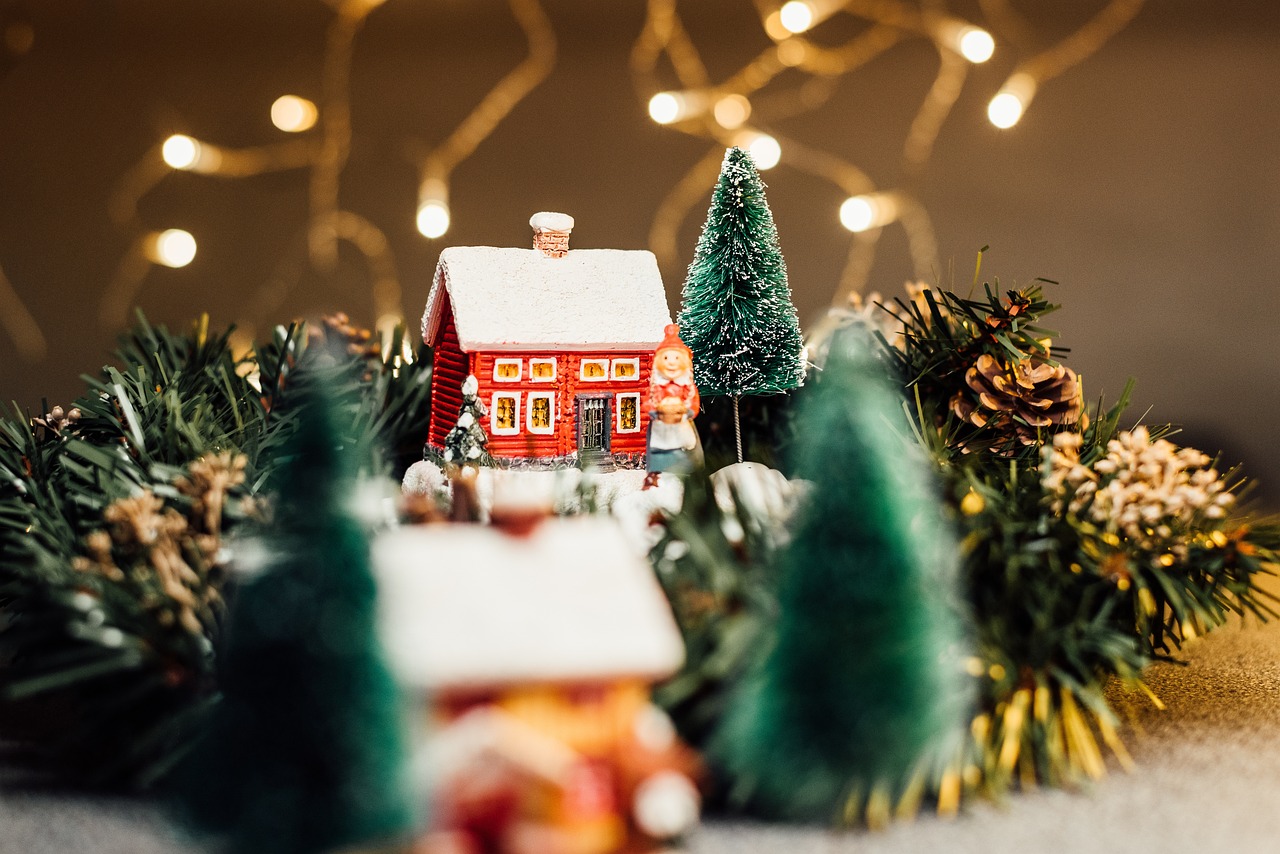
DIY Benches and Chairs
Creating your own benches and chairs is not just a fun DIY project; it’s a fantastic way to inject your personality into your patio space. Imagine lounging in a chair that you built yourself, tailored perfectly to your style and comfort. Not only does this give you the freedom to design furniture that fits your aesthetic, but it also allows you to create pieces that are uniquely yours. So, where do you start? Let’s dive into the process!
First, consider the design and dimensions of your seating. Think about how many people you want to accommodate. A cozy two-seater bench is perfect for intimate gatherings, while a longer bench can cater to larger groups. Measure your patio space to ensure that your new furniture won’t overwhelm the area. Once you have your measurements, sketch out a simple design that includes the height, width, and depth of your bench or chair.
Next up is material selection. You can use a variety of materials, but wood is often the go-to choice for DIY outdoor furniture due to its durability and ease of use. For instance, pressure-treated lumber is resistant to rot and insects, making it a solid option for outdoor settings. If you’re feeling adventurous, consider using reclaimed wood for a rustic charm that tells a story. Not only does reclaimed wood add character, but it also promotes sustainability, which is a big win for eco-conscious creators.
Now, let’s talk about the construction process. If you’re a beginner, it’s wise to start with a simple bench design. Here’s a quick overview of what you’ll need:
| Materials | Tools |
|---|---|
| Pressure-treated lumber or reclaimed wood | Drill |
| Screws (exterior grade) | Saw (circular or hand saw) |
| Sandpaper | Measuring tape |
| Outdoor wood sealant or paint | Paintbrush |
Once you have your materials and tools ready, follow these steps:
- Cut your wood to the desired lengths according to your design.
- Assemble the frame using screws, ensuring everything is square and sturdy.
- Attach the seat by securing planks across the top of the frame.
- Sand the edges to avoid splinters and apply your outdoor sealant or paint for protection against the elements.
And there you have it! You can create a beautiful bench or chair that not only looks great but is also a testament to your DIY skills. Don't forget to add some cushions for extra comfort and style. Choose outdoor fabrics that are weather-resistant to ensure they last through the seasons. This simple addition can transform your seating area into a cozy retreat.
With your new DIY benches and chairs, your patio will be ready for relaxation or entertaining friends. You’ll find that having a space designed by your own hands brings a sense of satisfaction that store-bought items simply can’t match. So grab your tools, get creative, and enjoy the process of making your patio a true extension of your home!
Q: What type of wood is best for outdoor furniture?
A: Pressure-treated lumber, cedar, and redwood are excellent choices due to their durability and resistance to rot.
Q: How can I ensure my DIY furniture lasts?
A: Make sure to use exterior-grade screws and sealant or paint to protect against moisture and UV damage.
Q: Can I use reclaimed wood for outdoor furniture?
A: Yes, reclaimed wood is a great option, but ensure it’s properly treated to avoid pests and decay.

Using Reclaimed Wood
When it comes to enhancing your patio with DIY decor, is a fantastic choice that combines sustainability with aesthetic appeal. This material not only tells a story but also adds a unique charm to your outdoor space. Imagine a bench or table crafted from weathered timber, each scratch and knot whispering tales of its past. Not only does reclaimed wood offer character, but it also helps reduce waste, making it an eco-friendly option for your projects.
Finding reclaimed wood can be an adventure in itself! You might stumble upon old barn wood, pallets, or even discarded furniture at local salvage yards or flea markets. The beauty of reclaimed wood lies in its variability; no two pieces are alike. This uniqueness allows you to create decor that stands out and reflects your personality. However, before diving into your project, it’s crucial to consider a few things:
- Condition: Make sure the wood is free from rot and insect damage.
- Preparation: Sanding and cleaning the wood will ensure a smooth finish and remove any harmful substances.
- Finish: Applying a weatherproof sealant can prolong the life of your outdoor furniture and keep it looking fresh.
Once you’ve sourced your reclaimed wood, the possibilities are endless. You can create stunning pieces such as:
- Benches: A long, rustic bench can serve as a centerpiece for your patio, perfect for gatherings with friends and family.
- Tables: A coffee table made from reclaimed wood not only provides a functional surface but also becomes a conversation starter.
- Planters: Turn leftover wood into stylish planter boxes that complement your greenery.
Remember, the key to working with reclaimed wood is to embrace its imperfections. The knots, cracks, and variations in color are what make each piece special. So, whether you’re crafting a beautiful bench or a charming planter, let the wood’s natural beauty shine through. By choosing reclaimed materials, you’re not just beautifying your patio; you’re also making a statement about sustainability and creativity.
So, roll up your sleeves and get ready to transform your outdoor space into a stunning retreat that reflects your style while being kind to the planet!
Q: Where can I find reclaimed wood?
A: You can find reclaimed wood at local salvage yards, flea markets, or even through online marketplaces. Check with local contractors who might have leftover materials from their projects.
Q: How do I prepare reclaimed wood for outdoor use?
A: Start by cleaning the wood thoroughly, removing any dirt and debris. Sand it down to eliminate rough edges and splinters, and consider applying a weatherproof sealant to protect it from the elements.
Q: Is reclaimed wood more expensive than new wood?
A: While reclaimed wood can sometimes be pricier due to its unique character and sourcing, it often offers a more sustainable and aesthetically pleasing option compared to new wood.
Q: Can I use reclaimed wood for structural projects?
A: Yes, reclaimed wood can be used for structural projects, but it’s essential to ensure that the wood is in good condition and suitable for the intended use. Consulting with a professional can help ensure safety and durability.
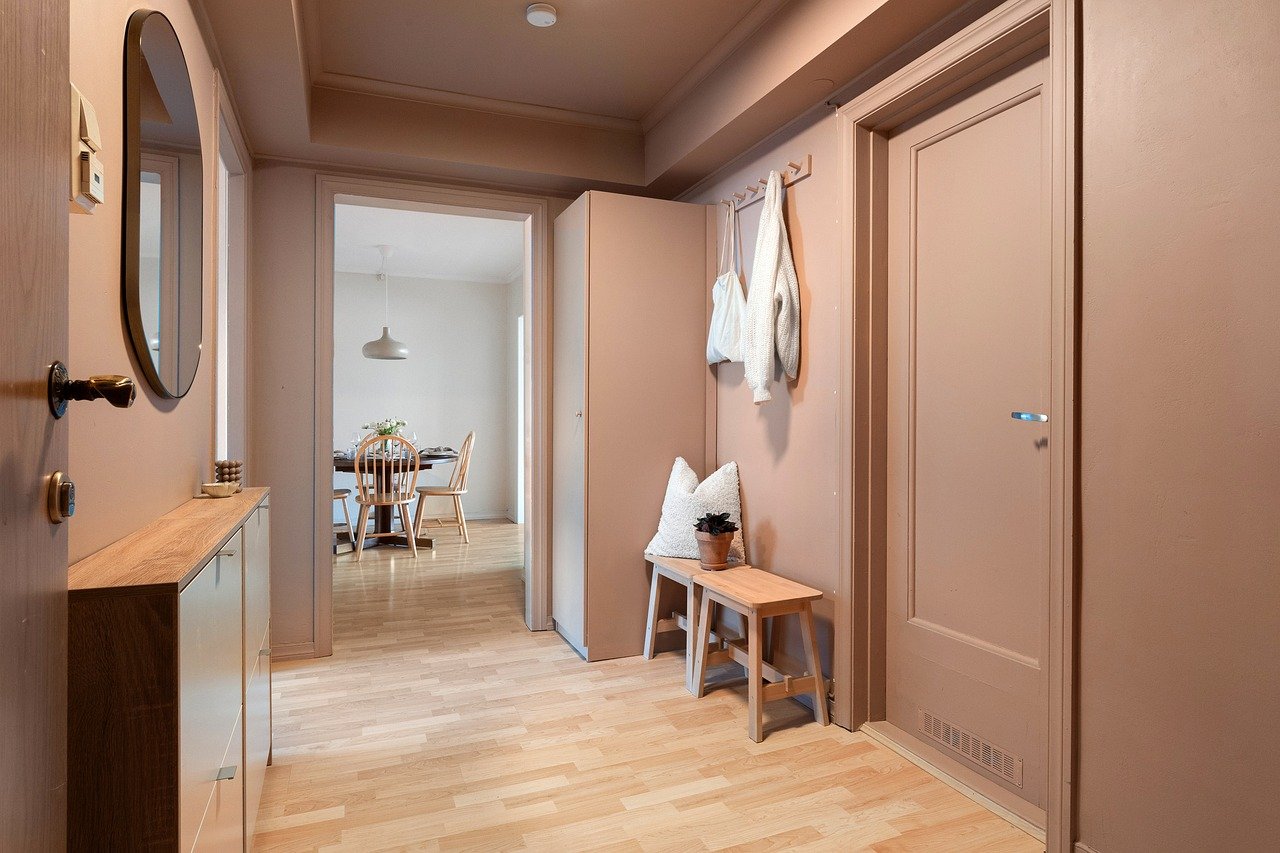
Incorporating Cushions and Throws
When it comes to sprucing up your patio, cushions and throws are like the cherry on top of a sundae—they add that extra flair and comfort that makes a space truly inviting. Imagine sinking into a cozy chair adorned with plush cushions, feeling the warmth of a soft throw wrapped around you as you sip your favorite beverage. It’s all about creating that perfect atmosphere for relaxation and entertainment. But how do you choose the right ones? Let’s dive into some tips that will help you elevate your outdoor space with these essential decor elements.
First off, the choice of outdoor fabrics is crucial. You want materials that are not only stylish but also durable enough to withstand the elements. Look for fabrics that are water-resistant and UV-protected to prevent fading and damage from the sun and rain. Some popular options include acrylic, polyester, and specially treated cotton. These fabrics come in a variety of colors and patterns, so you can easily find something that matches your style. For example, if you have a modern patio, you might opt for geometric patterns in bold colors, while a rustic space might call for earthy tones and floral designs.
Next, let’s talk about the size and shape of your cushions. You want to ensure that they not only fit your seating comfortably but also enhance the overall aesthetic. Consider mixing and matching different sizes and shapes—square cushions paired with rectangular ones can create visual interest. Don’t shy away from adding some fun textures either! A combination of smooth, soft, and even textured fabrics can make your seating area feel more dynamic. Plus, you can always play around with layering; for instance, a large cushion can serve as a base, topped with smaller, decorative cushions for that extra pop.
Now, what about throws? These versatile pieces are perfect for adding warmth during chilly evenings and can be draped over chairs or neatly folded in a basket for easy access. Choose throws that complement your cushions; a solid color throw can act as a beautiful contrast to patterned cushions, or vice versa. When selecting throws, look for those made from materials like acrylic, fleece, or even cotton blends that are easy to clean and maintain. You’ll want to ensure they are machine washable since outdoor spaces can attract dirt and spills.
Finally, let’s not forget about the placement of your cushions and throws. Strategically arranging them can significantly enhance the comfort and style of your patio. For instance, position larger cushions at the back of your seating area for support, and layer smaller ones in front for added comfort. Throws can be casually tossed over the side of a chair or neatly folded on a table to invite guests to grab one when they need it. It’s all about making your outdoor space feel welcoming and lived-in.
In summary, incorporating cushions and throws into your patio decor is a fantastic way to enhance both comfort and style. By choosing the right fabrics, sizes, and placements, you can create a cozy retreat that beckons you to unwind. So go ahead, get creative, and transform your outdoor area into a fabulous oasis!
- What materials are best for outdoor cushions? Look for water-resistant and UV-protected materials like acrylic or polyester.
- How do I clean outdoor cushions? Most outdoor fabrics can be machine washed; check the care label for specific instructions.
- Can I use indoor cushions outside? It's not recommended, as indoor cushions typically lack the durability needed for outdoor conditions.
- How do I choose the right throw for my patio? Opt for throws that complement your cushion colors and are made from easy-to-clean materials.

Lighting Options for Ambiance
When it comes to enhancing your patio experience, lighting plays a crucial role in setting the right mood. Imagine hosting a cozy gathering with friends, the soft glow of lights creating an inviting atmosphere that makes everyone feel at home. From twinkling string lights to charming lanterns, the options are endless and can be tailored to fit any style or budget. But how do you choose the right lighting for your outdoor oasis? Let's explore some fantastic DIY lighting ideas that will make your patio shine!
First off, consider using string lights. They are a classic choice for a reason! Not only are they easy to install, but they also add a magical touch to your outdoor space. You can drape them across your patio, wrap them around trees, or even hang them from hooks for a whimsical effect. Opt for warm white bulbs for a cozy ambiance, or go for colorful options to add a playful vibe. The best part? You can find affordable string lights at most home improvement stores or online.
If you're looking to add a bit of sophistication, lanterns are a wonderful option. They come in various styles—from rustic to modern—and can be placed on tables, hung from trees, or even set along pathways. You can make your own lanterns using mason jars or repurposed materials, giving them a personal touch. Fill them with candles or fairy lights for an enchanting glow. The flickering light not only creates a romantic atmosphere but also adds a sense of warmth and comfort.
Another exciting idea is to use solar lights. These eco-friendly options charge during the day and illuminate your patio at night without the need for electrical outlets. You can place them along walkways, in flower beds, or even in planter boxes to highlight your beautiful greenery. Plus, they come in various designs, allowing you to choose styles that complement your overall decor. Solar lights are not just functional; they also contribute to the aesthetics of your outdoor space.
For those who enjoy a bit of creativity, consider making your own DIY light fixtures. You can repurpose old items like wine bottles or tin cans to create unique lighting solutions. For instance, cut the bottoms off wine bottles and place candles inside for a chic look. Or, punch holes in tin cans to create a lantern effect. These projects not only save money but also allow you to express your personal style.
Finally, don’t underestimate the power of candles. They are a simple yet effective way to add ambiance. Use a variety of sizes and shapes, placing them on tables or hanging them in jars. For added safety, consider using LED candles, which provide the same warm glow without the worry of an open flame. You can also create a centerpiece with candles surrounded by flowers or greenery, making your patio a delightful place to unwind.
In summary, the right lighting can transform your patio into a stunning retreat for relaxation and entertainment. Whether you choose string lights, lanterns, solar lights, DIY fixtures, or candles, each option adds its unique charm and character. So, gather your materials, get creative, and let your patio shine!
- What type of lighting is best for a small patio? For small patios, string lights or solar lights are great options as they don’t take up much space and can create a cozy atmosphere.
- How can I make my own outdoor lighting? You can repurpose items like mason jars or wine bottles to create unique lanterns. Just add candles or fairy lights for a lovely glow.
- Are solar lights effective for lighting a patio? Yes! Solar lights are not only effective but also eco-friendly. They charge during the day and provide illumination at night.
- What colors should I choose for outdoor lighting? Warm white lights create a cozy ambiance, while colorful lights can add a fun and festive vibe. It all depends on the mood you want to set!
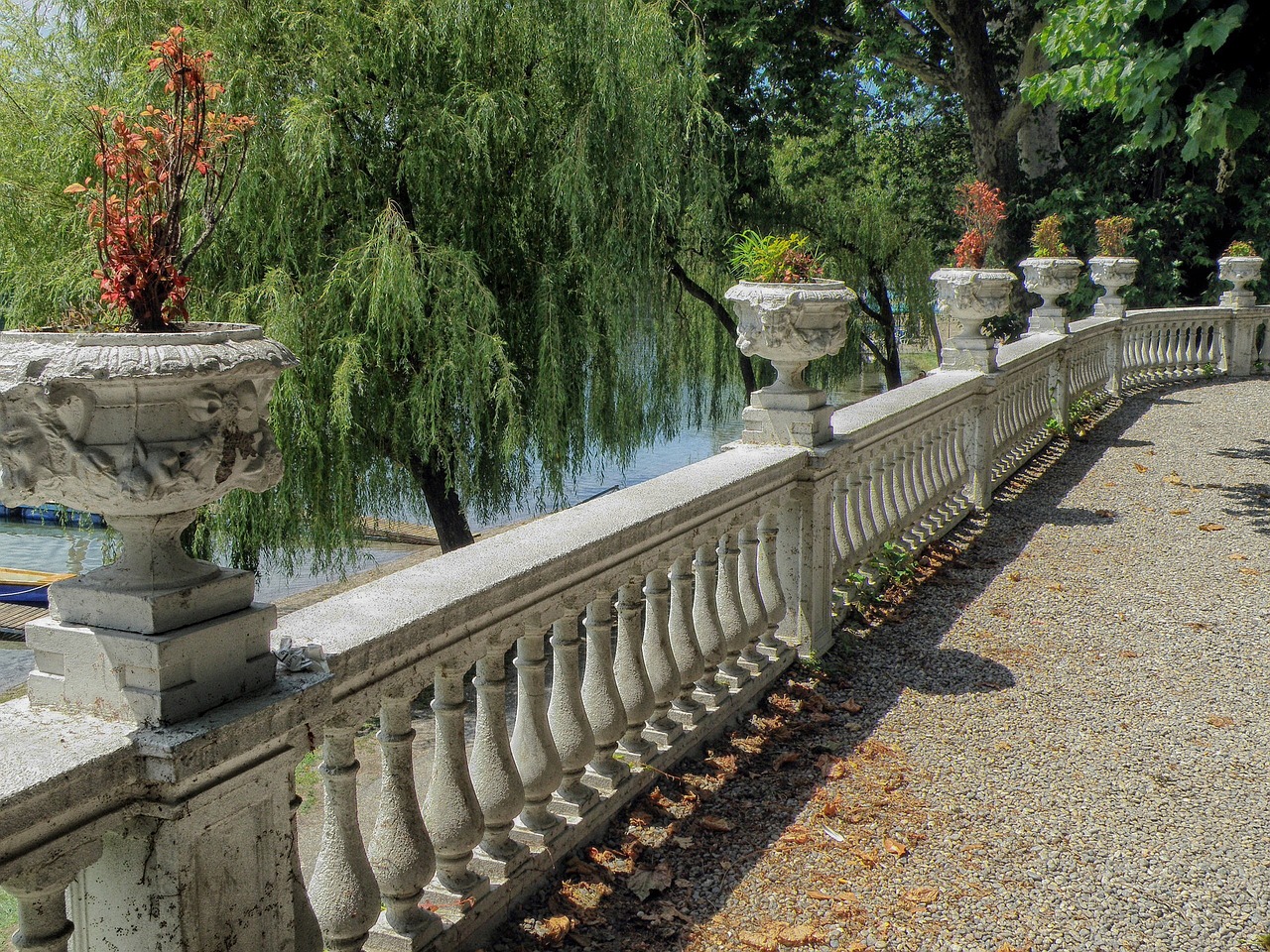
Adding Greenery and Planters
Integrating plants into your patio decor is not just about adding a splash of color; it’s about creating a lively atmosphere that invites you to relax and unwind. Imagine stepping onto your patio, greeted by the refreshing scent of blooming flowers and the sight of lush greenery. It’s like bringing a piece of nature into your home! When you think about enhancing your outdoor space, consider how plants can serve as both decor and a way to connect with the environment. Plus, they can improve air quality and create a soothing ambiance.
To get started, you’ll want to think about the types of plants that will thrive in your specific patio conditions. Do you have full sun, partial shade, or mostly shade? Understanding your space is crucial. For instance, if your patio basks in sunlight, you might opt for vibrant flowers like petunias or geraniums. If it’s more shaded, consider ferns or hostas that can thrive without direct sunlight. Remember, choosing the right plants is like picking the perfect outfit; it’s all about what suits the environment!
Once you've selected your plants, the next step is figuring out how to display them. This is where DIY planter projects come into play. Creating your own planters can be a fun and fulfilling project. You can customize them to match your patio's aesthetic, whether you prefer a rustic, modern, or bohemian vibe. For example, using reclaimed wood can give your planters a charming, weathered look that enhances your outdoor decor. Not only does this approach add character, but it’s also a sustainable choice that helps reduce waste.
Another fantastic way to add greenery is by incorporating vertical gardens. Vertical gardens are perfect for small patios where space is limited. They bring a unique visual element and can be constructed using materials like pallets or wall-mounted planters. Imagine a wall bursting with greenery, cascading down like a natural waterfall! This not only maximizes your space but also creates a stunning focal point that will impress your guests. You can even mix and match different types of plants to create a beautiful tapestry of colors and textures.
For those who enjoy a bit of creativity, DIY planter boxes are a wonderful option. You can build them in various shapes and sizes, allowing you to express your personal style. Consider creating a long, narrow planter box to line your patio railing or a large, square box to serve as a centerpiece. The possibilities are endless! Once constructed, you can paint or stain them to match your patio furniture or decor. Don’t forget to choose the right soil and drainage for your plants, as this will ensure they thrive and flourish.
In summary, adding greenery and planters to your patio is a delightful way to enhance its beauty and functionality. Whether you opt for vertical gardens, DIY planter boxes, or simply potted plants, the key is to choose what resonates with you and your space. With a little creativity and effort, your patio can transform into a vibrant oasis that beckons you to spend more time outdoors.
- What types of plants are best for a patio? It depends on the sunlight conditions. For full sun, consider succulents, petunias, or herbs. For shade, try ferns, hostas, or shade-tolerant flowers.
- How do I maintain my patio plants? Regular watering, pruning, and fertilizing are essential. Make sure to check the specific needs of each plant type.
- Can I use regular soil for my planter boxes? It’s best to use potting soil that is well-draining and suitable for container gardening to ensure healthy plant growth.
- What are some creative ideas for DIY planters? You can use old crates, tires, or even hanging baskets to create unique planter designs.
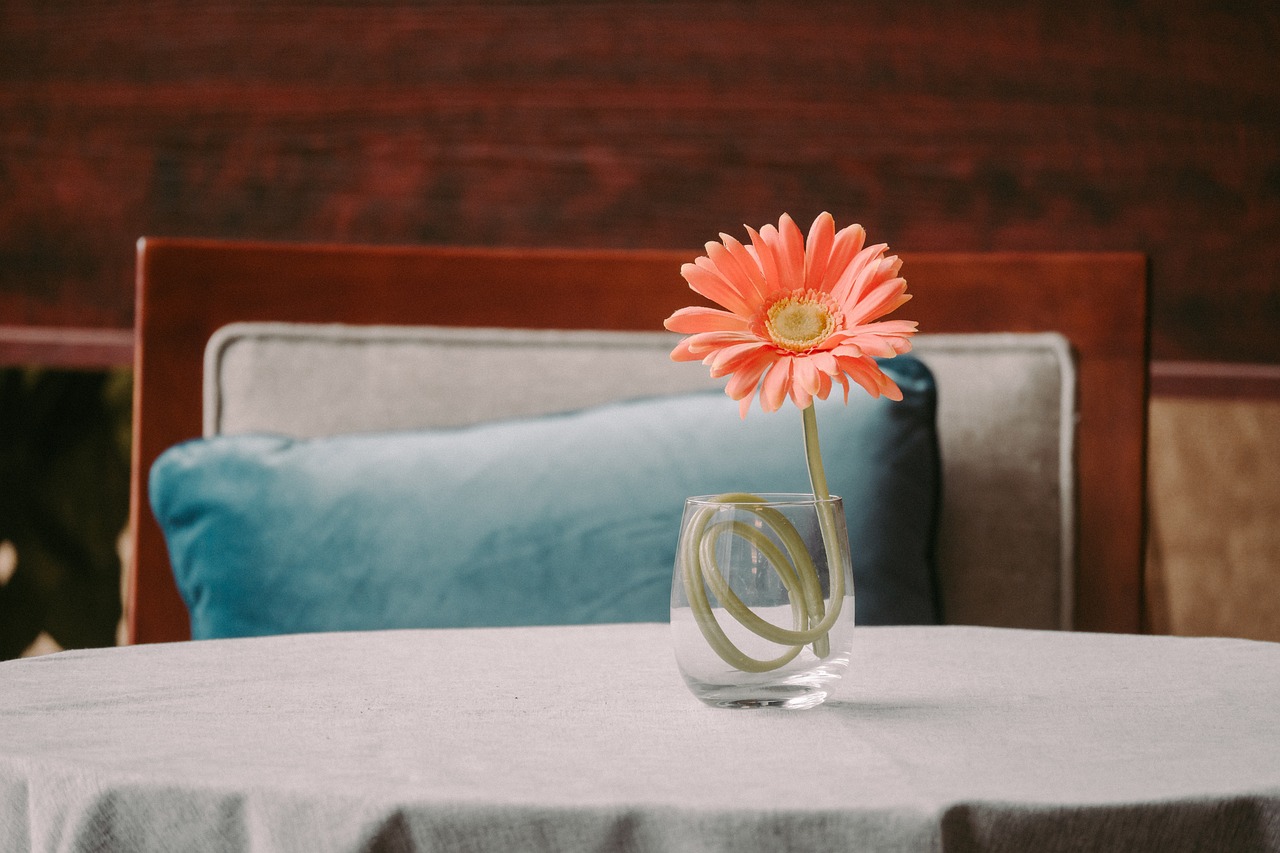
Vertical Garden Ideas
Are you looking to elevate your patio's aesthetic while making the most of limited space? A vertical garden could be the perfect solution! These innovative setups not only save space but also bring a splash of green into your outdoor area, creating a tranquil retreat right at home. Imagine transforming a plain wall into a lush tapestry of plants that not only beautifies your patio but also purifies the air. Sounds appealing, right?
When it comes to building your own vertical garden, the possibilities are endless. You can use various materials, such as wooden pallets, wall-mounted planters, or even repurposed items like old shoe organizers. Each option brings its unique flair and functionality to your outdoor space. For example, using pallets can give your garden a rustic charm, while sleek, modern planters can create a contemporary vibe. Here’s a quick overview of some popular options:
| Material | Pros | Cons |
|---|---|---|
| Wooden Pallets | Cost-effective, rustic look | May require sealing to prevent rot |
| Wall-mounted Planters | Space-efficient, stylish | Can be expensive, may require drilling |
| Repurposed Items | Unique aesthetics, eco-friendly | Durability varies, may need modification |
Once you've chosen your materials, the next step is selecting the right plants. Opt for a mix of herbs, succulents, and flowering plants to create a diverse and visually appealing display. Herbs like basil and mint not only smell great but can also be used in your kitchen. Succulents are low-maintenance and thrive in vertical setups, while flowering plants add vibrant colors to your garden. Make sure to consider the light conditions of your patio when selecting plants, as some may require more sunlight than others.
Another exciting idea is to incorporate a drip irrigation system into your vertical garden. This not only saves you time by automating the watering process but also ensures your plants receive adequate moisture without overwatering. You can easily set up a simple system using a timer and some tubing, allowing you to enjoy your green oasis without the hassle of daily upkeep.
In conclusion, creating a vertical garden on your patio is not just a practical solution for limited space; it’s also a wonderful way to express your creativity. Whether you go for a DIY pallet garden or a sleek wall-mounted planter, the result will be a stunning focal point that invites relaxation and enjoyment. So, roll up your sleeves and get ready to transform your outdoor space into a vibrant green haven!
1. What types of plants are best for a vertical garden?
A mix of herbs, succulents, and flowering plants works best. Choose plants based on your patio's light conditions.
2. How do I maintain a vertical garden?
Regular watering, pruning, and monitoring for pests are essential. Consider using a drip irrigation system for ease.
3. Can I use recycled materials for my vertical garden?
Absolutely! Items like wooden pallets, old shoe organizers, or even wine crates can make unique and eco-friendly planters.
4. Will a vertical garden work in shaded areas?
Yes, but choose shade-tolerant plants. Ferns and certain herbs like mint thrive in lower light conditions.
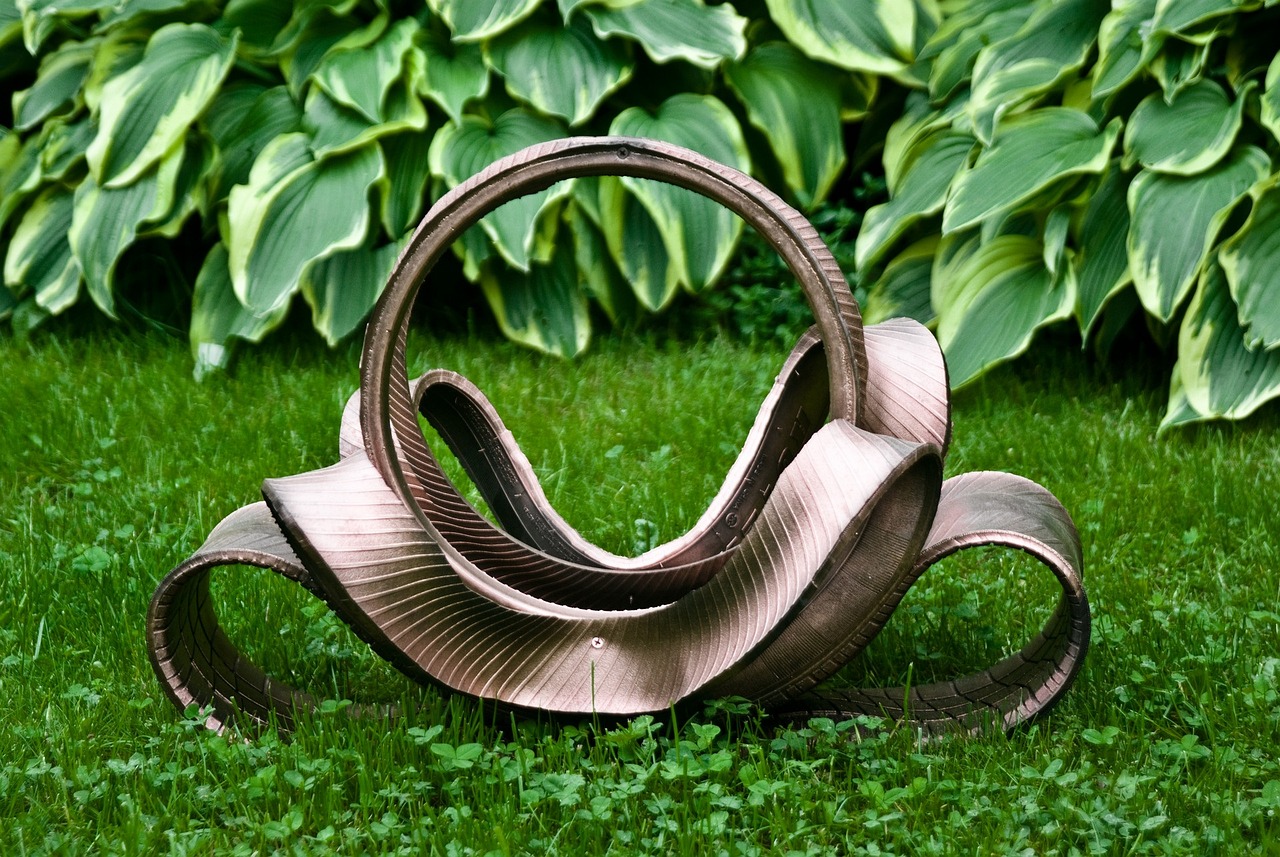
DIY Planter Boxes
Building your own planter boxes is not just a fun weekend project; it’s an opportunity to infuse your patio with your unique style while providing a nurturing home for your favorite plants. Imagine stepping out onto your patio and being greeted by vibrant blooms and lush greenery, all contained in beautifully crafted boxes that reflect your personal flair. Not only do these DIY planter boxes enhance the aesthetic appeal of your outdoor space, but they also offer practical benefits, such as maximizing your planting area and keeping your plants organized.
Before you dive into construction, it's essential to consider the materials you'll use. Wood is a popular choice due to its natural look and durability. Cedar and redwood are excellent options as they are naturally resistant to decay. Alternatively, if you’re looking for something more modern, metal planter boxes can add a sleek, contemporary touch. Don't forget about composite materials, which combine the best of both worlds—durability and style. Whatever material you choose, ensure it’s suitable for outdoor use to withstand the elements.
Now, let’s get into the nitty-gritty of building your planter boxes. Here’s a simple step-by-step guide:
- Gather Your Tools and Materials: You’ll need wood (or your chosen material), a saw, screws, a drill, and wood glue. Don't forget your measuring tape and safety gear!
- Measure and Cut: Decide on the size of your planter box based on the space available on your patio and the types of plants you wish to grow. Cut your wood pieces accordingly.
- Assemble the Box: Start by attaching the sides to the base using screws and wood glue for extra strength. Make sure everything is square and secure.
- Add Drainage Holes: Drill holes in the bottom of the planter box to ensure proper drainage, preventing water from pooling and damaging your plants.
- Finish and Decorate: Sand down any rough edges and apply a weather-resistant sealant or paint to protect your planter box from the elements. You can also add decorative touches, like stenciling or painting, to make it truly yours!
Once your planter boxes are built and decorated, it’s time to choose the right plants to fill them. Consider selecting a mix of annuals and perennials for a dynamic display. Herbs like basil and rosemary not only look great but are also practical for cooking. For a splash of color, consider vibrant flowers like petunias or marigolds. If you’re short on space, think about growing climbing plants, which can add vertical interest to your patio.
Lastly, don’t underestimate the power of arrangement. Grouping your planter boxes in varying heights can create a stunning visual effect. Consider using a tiered approach or placing taller boxes at the back and shorter ones in front. This not only makes your plants more visible but also creates depth and interest in your outdoor decor.
Q: What type of wood is best for outdoor planter boxes?
A: Cedar and redwood are great choices due to their natural resistance to rot and insects. If using other woods, make sure to treat them with a weather-resistant sealant.
Q: How do I ensure my plants don't get waterlogged?
A: Make sure to drill drainage holes in the bottom of your planter boxes. You can also add a layer of gravel at the bottom to promote drainage.
Q: Can I use planter boxes for vegetables?
A: Absolutely! Planter boxes are perfect for growing vegetables, especially if you choose the right size and ensure they receive enough sunlight.
Frequently Asked Questions
- What materials are best for DIY outdoor decor?
Choosing the right materials is crucial for both durability and aesthetics. Popular options include reclaimed wood for a rustic touch, metal for a modern look, and weather-resistant fabrics for cushions. Each material has its benefits, so consider the overall theme and climate of your patio when making your selection!
- How can I create a cozy seating area on my patio?
Transforming your patio into a cozy retreat starts with comfortable seating. Think about building DIY benches or using cushions to enhance comfort. You can get creative with layouts too—arranging seating in a circle can encourage conversation and make the space feel inviting!
- What are some good lighting options for my patio?
Lighting can truly change the vibe of your patio. Consider using string lights for a whimsical touch or lanterns for a more classic feel. You might even try DIY options like making your own lanterns from mason jars. The key is to create a warm, inviting atmosphere that enhances your outdoor gatherings!
- How do I incorporate plants into my patio decor?
Plants can add life and color to your outdoor space! You can build DIY planter boxes tailored to your style or even create a stunning vertical garden if space is limited. Choose plants that thrive in your climate and consider their size and color to make your patio pop!
- Can I use reclaimed wood for outdoor furniture?
Absolutely! Reclaimed wood is not only sustainable but also adds unique character to your outdoor furniture. Just make sure to properly treat the wood to withstand the elements, and you’ll have beautiful, durable pieces that tell a story!
- What type of outdoor fabrics should I choose for cushions?
Look for weather-resistant fabrics that can withstand sun and rain. Materials like solution-dyed acrylic or polyester are great options as they resist fading and are easy to clean. This way, your cushions will stay vibrant and comfortable for years to come!



















